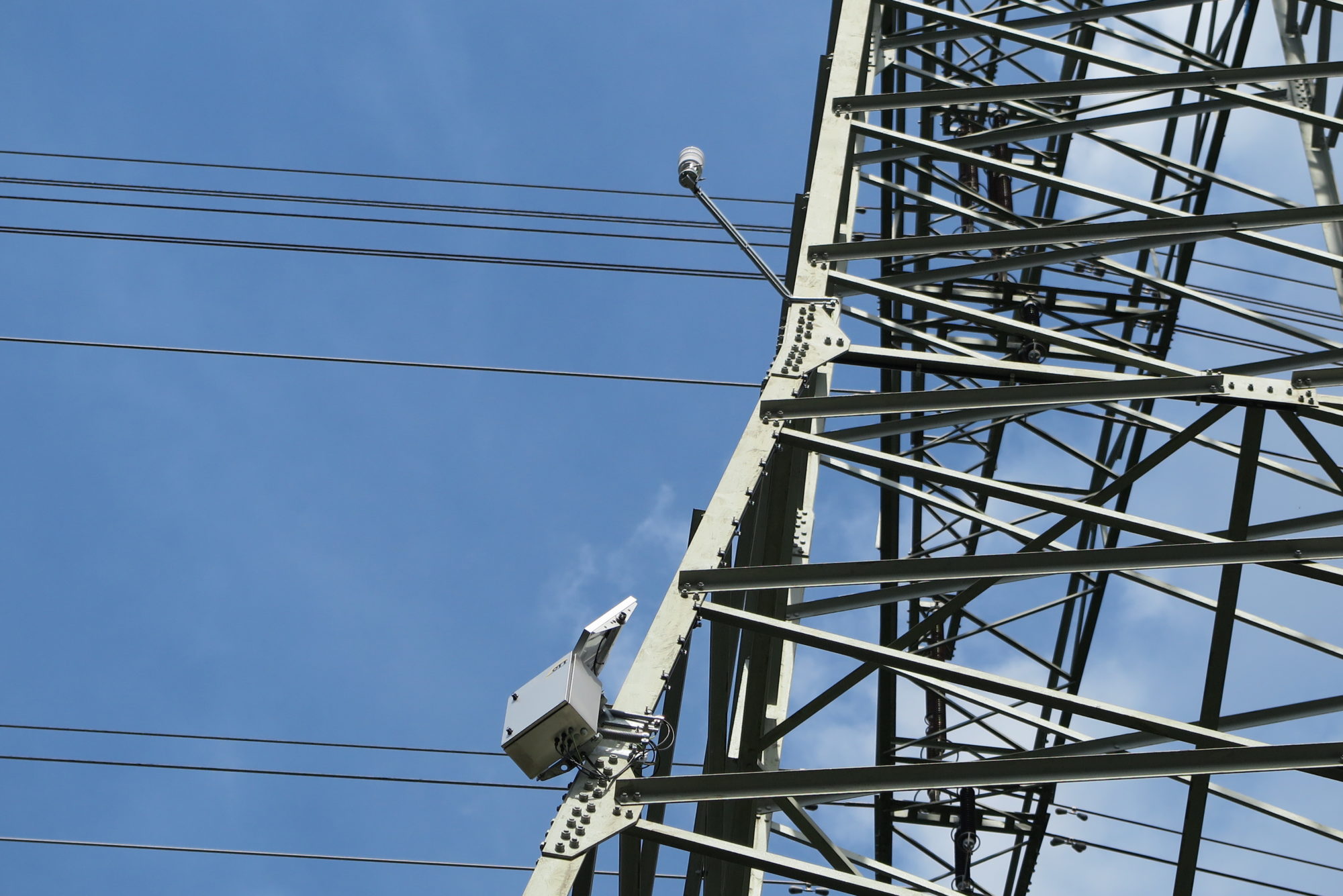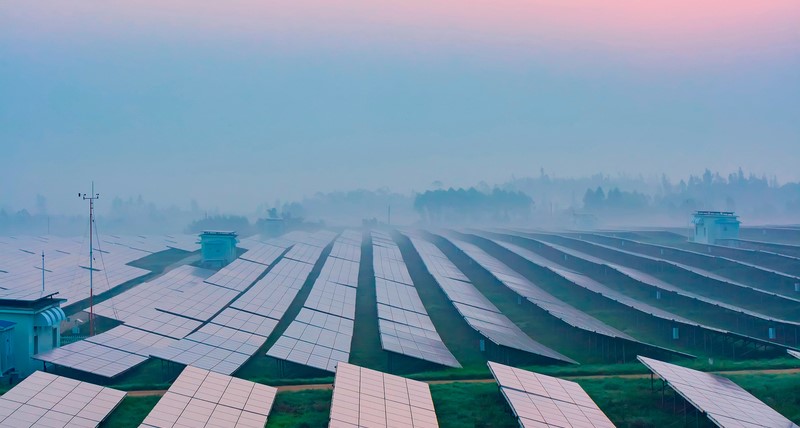Two workers are dangling from a thin steel frame, 25 meters above the ground. They are hanging from an overhead line pylon, secured by a harness like rock climbers in a wall. At lofty heights, they pick up a solar panel that comes towards them, attached to a rope. Electricity on a power pylon? – At second glance, it becomes clear what the climbing-experienced workers need the additional power supply for. The solar panel will power a weather station including an anemometer and pyranometer. This setup, put together by OTT HydroMet, will monitor the microclimate around the pylon, especially around the lines.
Precise meteorological data are a prerequisite for weather-dependent overhead line operation, for short: dynamic line rating (DLR). Some network operators are already using it to optimize their power grids and exploit the capacities of their lines. This has become necessary due to the natural fluctuations to which renewable energy sources are subjected.
Preparing the power grid for the energy system transformation
On particularly sunny or windy days, photovoltaic and wind power plants feed a lot of electricity into the grid within a short time. In order not to overload the power grid during such dynamic peaks, Germany is building new power lines, mostly from the wind farms on the coast down to the south. Existing lines will be reinforced with more lines and better use will be made of the currently available grid. The so-called NOVA-principle* (NOVA is a German acronym that stands for ‘grid optimization, before reinforcement, before expansion’) bundles these measures, one of the fastest to implement is dynamic line rating. Depending on the weather conditions, the lines can thus handle up to 50 percent more current flow.
Within the framework of a pilot project, OTT HydroMet has developed a complete solution for dynamic line rating. The scene described above occurred in July 2019 and since then the weather station has been collecting data without any significant failures. “Our station has continuously recorded measurements and transmitted the values”, says Udo Kronmüller, responsible project manager at OTT HydroMet. “The mild winter has made the pilot phase even easier. We are very satisfied with the results and have gained valuable experience”.
Coordinated dynamic line rating from a single source
The data and experiences from the project have been incorporated into the further development of the pilot setup. It consists almost entirely of components from the OTT HydroMet product portfolio and therefore matches perfectly:
- Weather station WS501-UMB for ultrasonic measurement of wind direction and speed, captures temperature, humidity, and air pressure, with built-in pyranometer CMP3 for measuring solar radiation
- Control cabinet made of stainless steel with electronics and datalogger XLink 500
- Solar panel for power supply
The turnkey solution can be attached to the mast in just a few hours. The sensors fit onto a single boom. Thanks to universal brackets, the boom with the measuring instruments can be attached to the pylon safely and statically proven without additional drilling. The only drilling required is for grounding and is mandatory.
The control cabinet is made of stainless steel. Connections are marked by color and coding and are therefore virtually non-interchangeable. “We deliberately designed the installation to be as simple as possible,” says Kronmüller. “This minimizes the installation time on the pylon.”
Compared to the pilot plant, the system consisting of control cabinet and solar panel moves even closer to the boom with the measuring sensors, adds Kronmüller: “We avoid cable tangles and thus deliver a very tidy and stable complete solution”.
You can find more information on overhead line monitoring and the successful pilot project in our application brochure.




